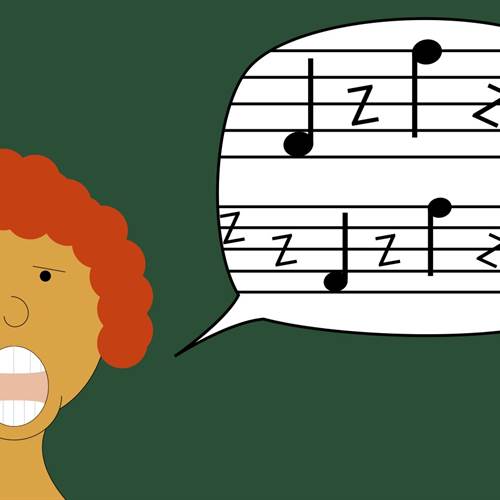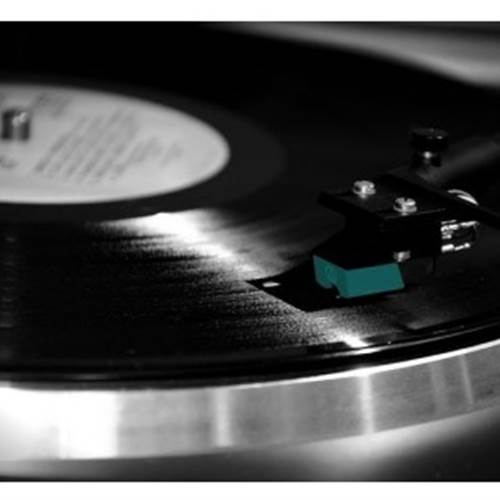
Mixed Voice
Posted Wednesday, September 4th 2013 by David McCall
The mixed voice is one of the most discussed, debated, and researched topics of vocal pedagogy. Almost every singer is working on her or his ‘mix,’ or trying to ‘mix’ that high note, or wanting to...
The mixed voice is one of the most discussed, debated, and researched topics of vocal pedagogy. Almost every singer is working on her or his ‘mix,’ or trying to ‘mix’ that high note, or wanting to strengthen the ‘mix.‘ Interestingly enough, there is no “mixed” voice as many singers perceive it. There isn’t a mystical and elusive third register lurking between your head and chest voice evading your grasp every time you reach for it. Physiologically, what we feel and hear as a mixed voice is actually a coordination between your vocal folds and the type of resonance you employ.
As you might already know, the vocal folds act somewhat similarly to guitar strings: higher pitches require longer vocal folds while lower notes require shorter folds. However, this analogy is flawed. We don’t have multiple sets of vocal folds like the guitar has multiple strings; therefore, to sing the required pitches in a line of music our vocal folds must lengthen and shorten rapidly. (This of course is provided we use our laryngeal muscles solely without neck, shoulder, jaw, or tongue tension.)
Long and short vocal folds can’t make a sound without something causing them to vibrate. That’s where your airflow comes in. As air leaves the lungs, travels through the larynx, it is stopped and released hundreds of times a second by your vocal folds creating a part of the sound of your voice. The other part is made of the resonance, which can be thought of as where the air exits. Once past the vocal folds, the air has essentially two options: exit through the mouth or exit through the nose.
The resonance can change quickly much like the shortening or lengthening of your vocal folds. Let’s take a look at four different combinations:
Short Folds + Air through Mouth
In your speaking voice or chest voice, sing the word “HAT.” Place your hand in front of your mouth and feel the air exhale (breathe out). Perhaps it sounds a little breathy.
Short Folds + Air through Nose
In your chest voice sing the word “MANG” (as in Mango.) This time, try to focus the exhale through your nose. Think of humming slightly through the “M” sound as you begin the word to really feel a breathy sensation through your nose.
Long Folds + Air through Mouth
Sing the word “HAT” again, but this time in your head voice or falsetto. Try it a couple of times focusing on exhaling (breathing out) through your mouth. Perhaps it will sound breathy, much like a high whisper.
Long Folds + Air through Nose
Back to “MANG,” but this time in your head voice or falsetto. Test the waters with a hum akin to the sound of a whining puppy. Try to sustain the nasal exhale as you attempt the entire word now. (For a creepy demonstration from The Powerpufff Girls, check out Him.)
Mix Matched Resonance
Now that you’ve heard and felt these four different types of sounds, how’d they feel? Perhaps they were loud and breathy or only loud or only breathy. Chances are they felt a bit labored. Nothing sweat-worthy, but but a bit more active.
Chest and Head voice through the mouth are definitely sounds we need to be able to call upon from time to time, but for mixing they can be less than helpful. Air leaving the mouth creates a “chestier” formation in the vocal folds. They become thicker and press together a bit more firmly, which isn’t ideal for singing higher and higher. Think about the amount of energy required to stretch a thick rubber band as opposed to the amount of energy required to stretch a thin one. It’s a version of mix-matched resonance that we should be able to produce (and probably can already.)
The instances when the air was leaving your nose in both chest and head voice were more indicative of a mixed voice. Perhaps they felt a bit weaker than the other, maybe not. If you were relaxed as possible, using only laryngeal muscles and your exhale muscles you might have felt the sensation some students have called “singing without the throat.”
When you’re exhaling through your nose, you create a perfect storm for mixing. Air is not allowed to flood out of your mouth; thus, a slower trickle of air leaks through your nose like a traffic jam. The pressure is no longer building up under your vocal folds, but is instead building up against the bone and tissue of the nasal cavities. Bone can withstand air pressure far better than can the delicate tissues of the vocal folds, creating a perfect singing storm.
As you work on your singing, consider upping the amount of exhale through your nose. If you rehearse it diligently, you’ll find increasing strength without the exertion sweat that comes with dragging chest voice higher with air leaving through your mouth. Try this little sliding exercise to solidify the feeling of the nasal exhale:
On an M, N, or NG, slide in this pattern:
1—3, *breath* 3—5, *breath* 5—3, *breath* 3—1
Happy Singing, Nose-Breathers!

David McCall
Senior Voice Teacher, Head of Vocal Development
David has become one of the leading instructors of Contemporary Voice in New York City, with clients ranging from Broadway singers (Billy Elliot, Matilda), Classical and sacred music singers, cantors in New York City Synagogues, to Professional Rock and Pop artists, some of which have toured and been signed to record contracts, appeared on shows like The Voice and American Idol, and performed at venues such as SXSW. Additionally, David has taught as a Master Teacher of Contemporary Voice for the NYSTA Comparative Vocal Pedagogy series.

Efficiency in Singing
As singers we often set goals pertaining to our vocal technique...

Signs That You Might Be Vocally Fatigued
The voice is the only instrument that is apart the human body (unless you count clapping your hands as percussion!!). So it makes sense that the instrument is the entire body, not just the larynx alone. Everything from body alignment, respiratory system, the larynx, vocal tract, not to mention the brain are involved in this high level athletic coordination!

TLC for your R&B
The best part of my job as an instructor at New York Vocal Coaching is helping varied singers gain control over their voices. In this article, I want to share a few thoughts on the R&B style and one of my artists who is working to master her R&B sound.